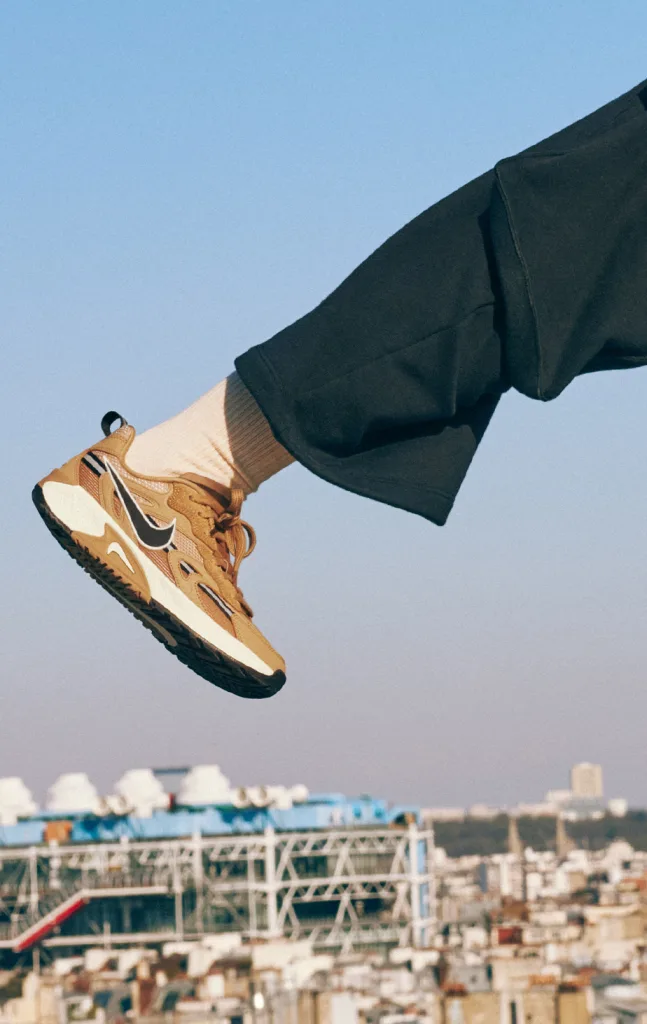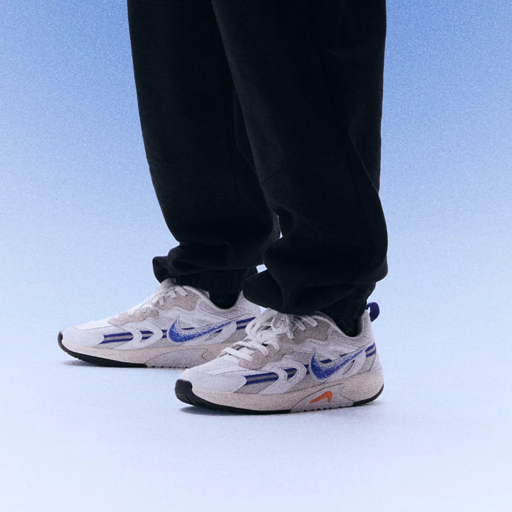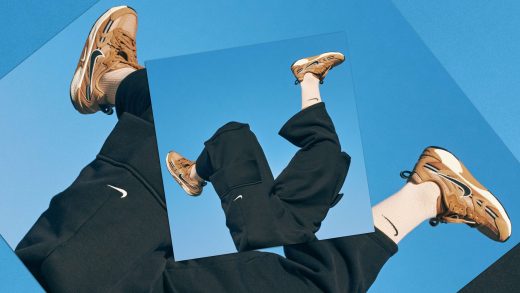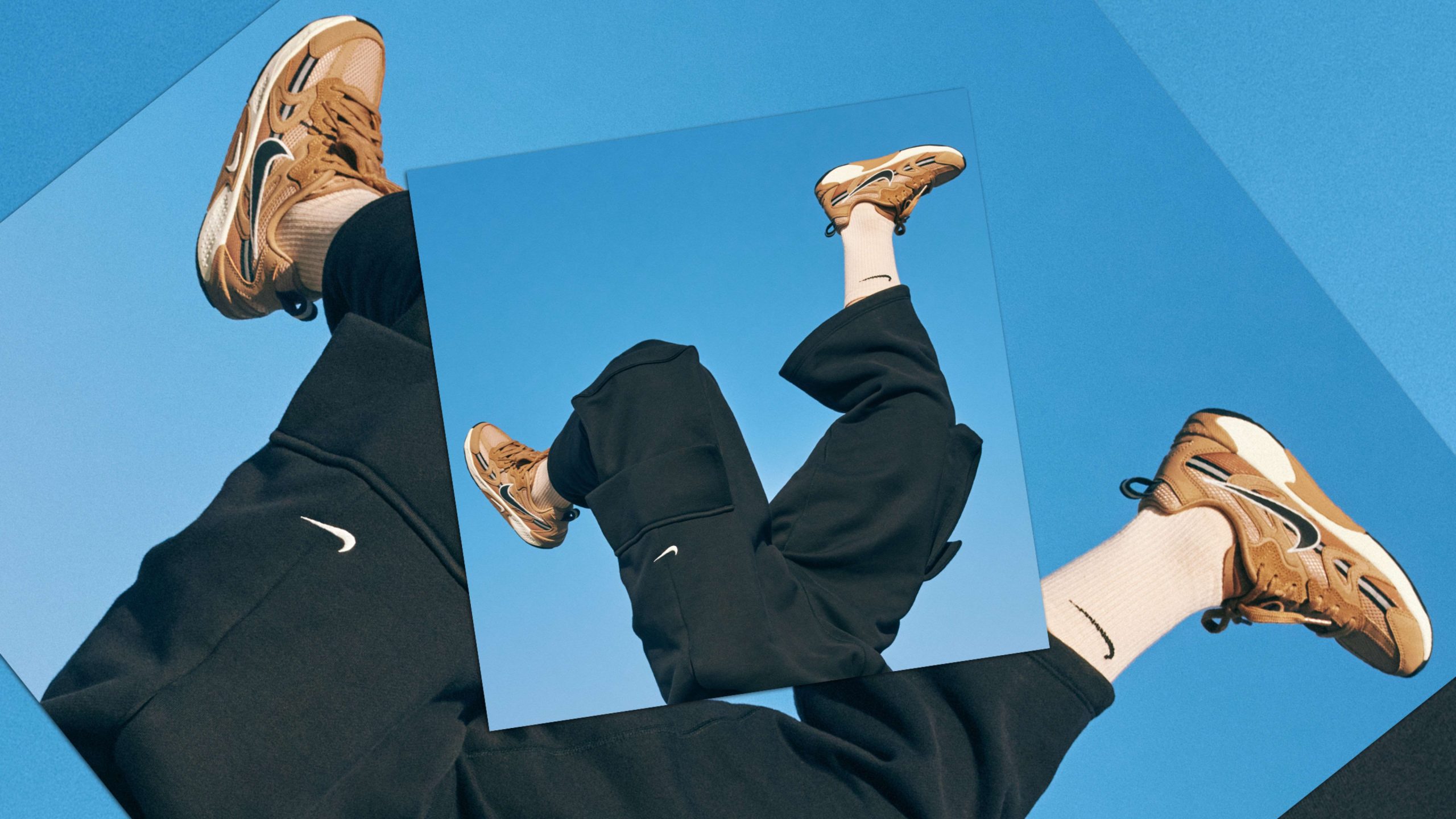Inside Nike’s seven-year design process for the Nike Jam, its first-ever breaking shoe
Inside Nike’s seven-year design process for the Nike Jam, its first-ever breaking shoe
The sport of breaking will debut at the Paris Summer Olympics, and Nike has just the shoe for it. Here’s an exclusive look at how the Nike Jam was born.
BY Mark Wilson
It’s something of an open secret about Nike design. All of its modern performance shoes—whether for jogging, soccer, or basketball—are really variations on a running shoe. Because just about every sport involves running, shoes across categories return energy with every stride, saving you effort and helping you play longer. The approach makes quantifiable sense for most sports.
But not for breaking.
At the Paris Olympic Games, breaking (the preferred term for breakdancing) will debut for the first time. And Nike—which is banking on the Olympics to remind the world that it’s an innovator, despite its recent troubles—is outfitting America’s inaugural team with a new shoe called the Nike Jam that defies the way it typically designs for a sport. Even though its silhouette is a loose riff on the legendary Nike Spiridon, the Jam is decidedly not a running shoe.

For a company that just teased a wild collection of AI-designed sneakers coiling and bubbling with all manner of Air technology, the Jam is surprisingly retro, featuring a playful upside down swoosh that appears right-side up when a breaker is inverted (as they frequently are).
Still, the complexity of the sport demanded that Nike adjust the shoe in new ways—complete with features to enable feet to slide and ankles to roll. Breaking is very much not about running in a predictable or efficient biomechanical motion; it’s about challenging the norms of human movements with gnarly stunts that frequently look like they could dislocate a joint or sprain an ankle.
“I know people who literally spin on the side of their shoe with their other foot on top,” says Sunny Choi, the U.S.’s top-ranked B-girl who worked on development of the shoe with Nike. “I don’t have the ankle mobility to do that! But that is wild. That is breaking. And that’s probably what makes designing these shoes so challenging. Everyone uses them differently.”
Long before Nike got involved, breaking itself evolved over nearly 50 years into two distinct styles.

As Choi explains, Adidas Superstars were the original breaking shoe. (Adidas was the brand of the New York-born hip-hop scene, where breaking was born as a way to dance during the drum breaks in a song.) Such classic, flat-bottomed shoes have benefits that many breakers still appreciate. As skateboarders will tell you, they offer a lot of tactility under the foot. This tactility helps a breaker’s feet land on the ground like an insect on water during toprocks and downrocks (the intricate footwork they do while standing and on the floor, respectively).
“I think the differentiator between Olympic-level breakers and [people] just competing for fun is the ability to be very technical, and to really hit their foundational footwork,” says Cevo Vultaggio, Nike concept director for innovation.
On the other side of the evolutionary tree, you have breakers who specialize in power moves—dancers like Choi—who rocket into the air like a snowboarder with neither snow nor a halfpipe, before slamming to the ground with 10x the force of gravity and shrugging it off without losing a step. These dancers welcome a bit of lift and cushion in their heel, and tend to embrace shoes like Air Maxes or even Reebok Classics (both of which are classics, but debuted more a decade after the Superstar).
To break into breaking, Nike designers began the process seven years ago, researching the subculture and attending events. Nike takes pride in structuring itself to respond to the needs of athletes, building performance products inspired by function. (Though the company has faced criticism from athletes ranging from MLB ballplayers to Olympic runners in the last few months, who have questioned just how closely the company is listening if it’s releasing jerseys that you sweat through and running uniforms that barely cover a woman’s bikini line.)
About four years ago, Nike started developing the breaking shoe in earnest. The company brought dancers into its Nike Sports Research Lab to research how they move in shoes. Since breakers compete to live-mixed songs without knowing the track that’s coming next, Nike hired a DJ to accompany them. It filmed these elite breakers dancing for three days, analyzing the motion of their movement and measuring their impact on force plates embedded into the lab’s floor.
“One of the biggest compromises that stood out was that they were kind of choosing between a shoe with protection from the ground versus being able to feel the ground,” notes Vultaggio. Cailee Caldwell, inline program manager at Nike Sports Research Lab, explains that Nike’s collected data supported breakers’ bifurcated strategy to their own footwear.
While Nike had floated a few avant-garde designs to the group—a skater shoe wrapped in grippy black goo; a Flyknit high top with a big eraser of an outsole on the bottom—the company ultimated opted for a retro approach in more ways than one.
On top, yes, the Jam looks like a shoe that might have been released in the 1970s or 80s, with thick textile overlays that are can stand up to more scraping on concrete (breakers dance anywhere and everywhere). In terms of technology, Nike ditched the fancy energy-returning carbon plates, Air bags, and ZoomX foam that you see in most of its Olympics releases. Instead, it opted for a more traditional foam drop-in (think Dr.Scholls insert).
“What seemed to work really well was a nice simple construct, right under their foot,” says Caldwell. “So they can still feel the ground, but when they’re doing those hard landings on concrete, it also gives them some protection.”
The Jam may be traditional on the inside, but innovations are hiding in plain sight, right on the outsole. Those design details include a subtly curved bottom, which allows the ankle to roll (hereasy in most sports!). Braille-like nibs help a breaker know where they’re touching when grabbing their foot during a move. And most subtly of all, around the toe knuckle, just in front of those nibs, lives a slightly different rubber compound that’s slicker than the rest of the shoe: It features “a lower friction coefficient,” to enable the foot to slide across the floor. It’s a high-tech, industrial solution for an idea Nike first prototyped with Choi using nothing but a piece of tape.
Nike is launching the Jam for the Paris Summer Olympics, but notably, breaking won’t be part of the 2028 Games in Los Angeles. It’s hard to say how popular the activity will become from here—as either a traditional art or a modernized sport—but Nike insists its involvement is a long-term investment, both in events around the culture of breaking and the product itself, as part of its strategy to increase the overall market for performance footwear.
“Our ultimate scorecard is, are we expanding sport, growing the definition of sport? And are we inviting more people into it? People who may not have thought of themselves as an athlete?” says Nike CEO John Donahoe. “You know, 30 years ago, that was someone who didn’t realize that . . . doing yoga was athletics.”
ABOUT THE AUTHOR
(20)



